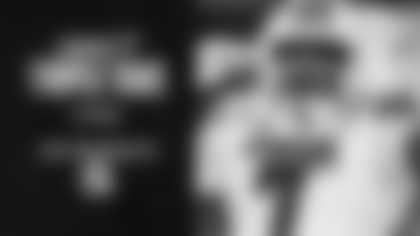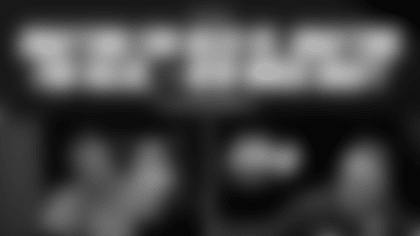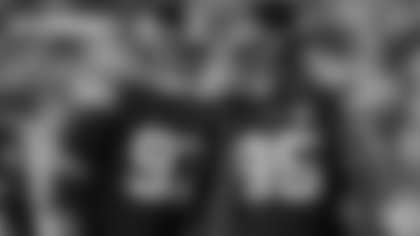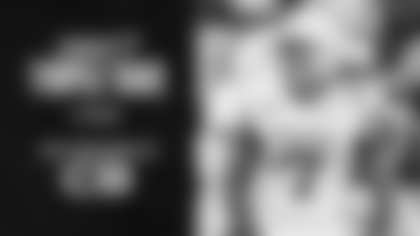Strictly speaking, the "news" portion of Coach Mike Tomlin's weekly get-together with the media was limited.
He revealed that Brett Keisel will not play on Sunday in Miami because of a hamstring injury, with the replacement in the starting lineup to be determined by a mini-competition between Nick Eason and Ziggy Hood. He also said the starter at right guard will be determined by whether Doug Legursky (MCL sprain) is healthier than Trai Essex (ankle), or vice versa. Tomlin also wasn't ready to say that Emmanuel Sanders – despite two catches for 37 yards vs. the Browns – would be in uniform against the Dolphins, what with his ongoing head-to-head battle with fellow rookie receiver Antonio Brown.
But the bulk of any news conference revolves around the questions asked by the assembled media, and the group at the UPMC Sports Performance Complex was especially interested in the helmet-to-helmet hits that occurred in several games over the weekend.
James Harrison's name had been brought up in connection with two of the plays that have drawn the most attention, and by the time Tomlin settled in behind the microphone on Tuesday, the NFL already had announced that his hit on Joshua Cribbs was legal and than the one on Mohamed Massaquoi would be reviewed.
After last Sunday's game against the Browns, Tomlin said he believed the hits made by Harrison to be "legal hits, not fineable hits," and on Tuesday he would add, "My opinion is still my opinion in regards to the hits."
But Tomlin also said he is in favor of strict enforcement by the league when it determines a hit to be illegal.
"I'm a proponent of it. I'm all for player safety," said Tomlin. "I think it's a proper initiative that the NFL has. We need to safeguard the men who play this game to the best of our abilities, and make it as safe as we possibly can. But I also think we have an obligation to those who look at the NFL to provide the safest game we can. I'm talking about high school, college and little league players and so forth around the world. I'm a proponent of player safety and whatever rule or rule adjustment we do to make it safe."
The reason why the league ruled Harrison's hit on Cribbs to be legal was because as Tomlin explained, "Cribbs was the wildcat quarterback. He was the runner. Those guys are not protected. That's why a few weeks ago when you guys were asking me why Dennis Dixon doesn't run – the NFL is dangerous for non-running backs running in close quarters."
Tomlin went on to explain that on the play in which Cribbs was injured, the Steelers defense executed as it is taught.
"If you look at Harrison's hit on Cribbs, the first man to make contact with him was a hit-and-wrap tackler in LaMarr Woodley," said Tomlin. "We teach the second man in to dislodge the ball on contact, because that's what we desire. We want possession of the football. They both did exactly what we coach and what we ask them to do. The first man to confront Joshua Cribbs was LaMarr Woodley. He came to balance, he had a nice-formed wrap tackle. The second man in attempted to dislodge the ball on contact and was able to do it, of course though it was recovered by Cleveland."
During a Tuesday morning radio appearance, NFL Vice President of Football Operations Ray Anderson said, "If there are flagrant and egregious violations of our current rules, we will be enforcing, effective immediately, discipline at a higher level. We need to get our players firmly in line with the current rules, and that's what our intentions are, effective immediately."
The higher level of discipline is assumed to mean suspensions, and Tomlin is not opposed.
"I am a proponent of levying whatever kind of punishment the NFL deems necessary for those who are repeat offenders, for those (hits) that are flagrant and for those that are egregious hits," said Tomlin. "I agree with that. Whatever they deem necessary, I am going to be a supporter of, particularly when it comes to player safety."
Another issue that was brought up to Tomlin had to do with comments Harrison made after the game, in which he talked about the difference between hurting an opponent and injuring an opponent. The headline on the story read, "Harrison out to hurt, not injure opponents."
In the body of the story, which appeared in the Monday edition of the Pittsburgh Post-Gazette, Harrison is quoted as saying, "I don't want to see anyone injured, but I'm not opposed to hurting anyone. There's a difference. When you're injured, you can't play. But when you're hurt, you can shake it off and come back. I try to hurt people."
"I didn't see those comments, but I know James," said Tomlin. "He says a lot of things that he doesn't necessarily mean. He is a tough-talker, like a lot of guys who play the game at this level. If you want to get to know James, catch him on a Tuesday when he is walking through the building with his son. He's a big softy."
When it comes to helmet-to-helmet hits, the NFL appears to be moving in a direction that's anything but soft, and while Tomlin is all for player safety he didn't sound optimistic that all such incidents can be eliminated from the game.
"No, I just don't know if that is realistic. Helmet-to-helmet contact is going to occur from time to time in football," said Tomlin. "Things happen fast, and these are big, moving people. I think the issue here is that we coach lowering of the target, to minimize or reduce the number of those opportunities, and we talk about flagrant or egregious approaches."





